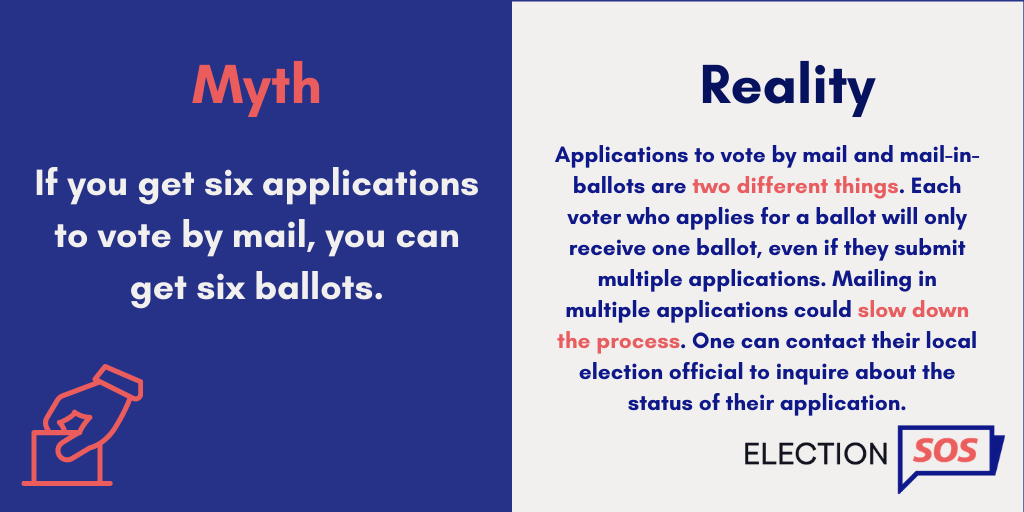
Myth vs. Reality: Voting by Mail
article

Along with the many physical and logistical challenges that election officials, voters, and journalists face this election, we also have to contend with rampant misinformation.
In this resource, we highlight some common misconceptions about voting by mail and explain the reality in each case. We draw from our webinar with Democracy Fund’s Tammy Patrick, a seasoned elections expert, as well from other reputable sources.

Part of what makes voting by mail a little tricky is that each state has its own rules. For example, in Texas, ballots postmarked by Election Day will be counted if received by the elections office no later than 5 p.m. on November 4th. There is an exception, however, for voters casting ballots from outside the U.S. and whose ballots are postmarked by Election Day: their ballots must be received by November 9th. Each state has similarly specific rules, so it’s important to communicate that specificity and provide resources where voters can find what regulations apply to them. The Washington Post’s guide to voting in each state provides clear dates for readers that account for specifics.

As the New York Times and other outlets report, the USPS has more than enough capacity to handle the volume of mail that would result if every single registered voter chose to vote by mail. In the week before Christmas, they estimate having “handled two and a half billion pieces of first-class mail.”
There may be problems with mail-in voting, but they have little to do with surge capacity. Instead, they result from lack of postmarking, conflicting deadlines that confuse the voter, and the amount of time it takes to process mail, as the Los Angeles Times explains.

Certain states refer to all ballots sent by mail as absentee ballots, whereas other states talk about voting by mail. Both terms refer to the same process, and voters should not be discouraged if they only see instructions for absentee voting on their local elections website. This article by c|net does a great job of explaining why the different terms are used. The most important thing to communicate to all voters is that whatever term they see, they can find out their jurisdiction’s policies for voting by mail here.

Ballot drop boxes are the goldilocks option for people who are nervous about in-person voting due to ongoing COVID-19 concerns but also worry that their ballot will not be mailed in time to be counted. Not all states have ballot drop boxes, and even in those that do, voters should exercise great caution around deposit cutoff times to ensure their ballots are counted.
Unfortunately, as this article by NPR makes clear, ballot drop boxes have become fertile ground for litigation and many states still do not have clear policies on whether or not they will allow drop boxes. As always, encourage readers to check in with their local elections office for the most up to date information.

While it is true that of the incredibly small amount of voter fraud that happens, more of it occurs via absentee or mail-in voting than via in-person voting. Yet, voting by mail is still very safe. Saying that voting by mail is less secure than voting in person is like saying that you’re more likely to die from a vending machine falling on you than from a shark attack. Yes, it’s true, but both phenomena are so rare that it does not really make a difference to whether or not you buy sodas or go swimming.

We’re happy to report this myth has been heartily debunked, as shown by this article in PolitiFact. Even if you live in a state where applications to vote by mail are sent to you automatically, and you receive multiple applications, you will still only receive one ballot. You may receive multiple applications because, as the AP points out, elections laws in some states require that the elections office send the ballot application form to any registered address that they have on file. Other outside organizations, including political parties, may also send application forms, but that will have no bearing on how many ballots you receive.
As with all questions regarding mail-in ballots, voters should reach out to their local elections offices early if they have any doubts. In our experience, voting clerks are happy to help provided voters give them ample time to do so.
